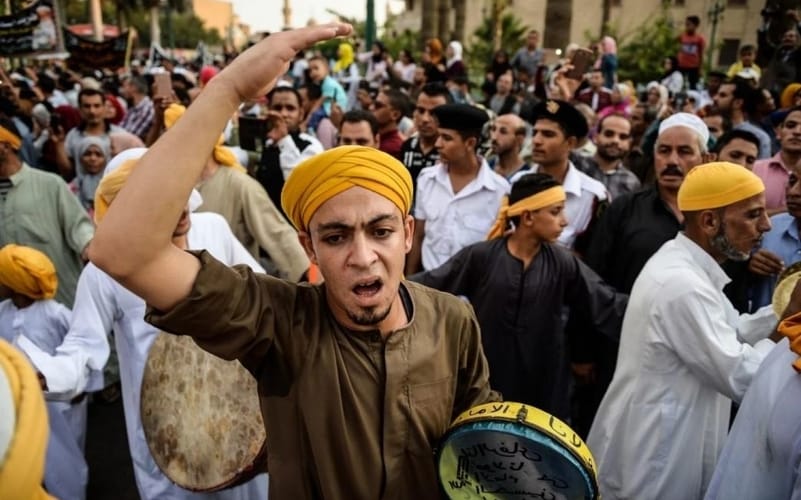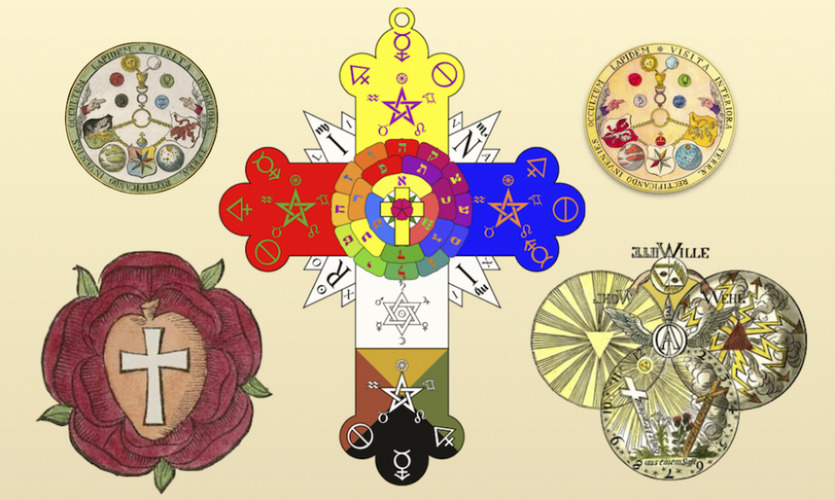What is the difference between the Sufi religion and the Islamic religion?
Sufism or Sufi Religion is a mystical form of Islam, a school of practice that emphasizes the inward search for God and shuns materialism. It has produced some of the world’s most beloved literature, like the love poems of the 13th-century Iranian jurist Rumi. Its modern-day adherents cherish tolerance and pluralism.
Sufis in The Sufi Religion, like all practicing Muslims, pray five times a day and fast Ramadan and must visit Mecca once in their lifetime if they have the means. Additionally, order-specific practices might include the repetition of phrases using a set of beads, periods of semi-isolation or visits to the shrines of local spiritual leaders. The Sufis are Muslims and live Islam in perfection with body and soul. The body of Islam is Sharia, the law, and soul of Islam is Sufism, spirituality.

Sufi Religion Practices:
A central component of Sufi worship is the rite of dhikr, which involves constant, meditative remembrance of God, done both communally and individually, geared toward cultivating a greater connection with the divine.
The concept of dhikr is rooted in the Quran as an instruction to all Muslims to devote time towards specific acts of remembrance and repetition of the names of Allah, praying supplementary prayers, and can be extended to other activities that contribute towards achieving an experiential connection with the divine.
Other practices or rituals that Sufis engage in, which vary from order to order, include prayers and fasting, the celebration of the Prophet Muhammad’s birthday, the visitation of, and performance of rituals at shrines and graves, meditation, and abstinence.
Additionally, the seeker ought to be firmly grounded in supererogatory practices known from the life of Muhammad (such as the “sunnah prayers”).
Sufi Religion practices, while attractive to some, are not a means for gaining knowledge. The traditional scholars of Sufism hold it as absolutely axiomatic that knowledge of God is not a psychological state generated through breath control. Thus, the practice of “techniques” is not the cause, but instead, the occasion for such knowledge to be obtained (if at all), given proper prerequisites and proper guidance by a master of the way. Furthermore, the emphasis on practices may obscure a far more important fact, The seeker is, in a sense, to become a broken person, stripped of all habits through the practice of (in the words of Imam Al-Ghazali) solitude, silence, sleeplessness, and hunger.
in The Sufi Religion Some Sufi orders use devotional music and ritual movements, akin to dance, to further enhance the experiential nearness to God they are seeking. This practice is most commonly associated today with the Mevlevi Sufi order’s Dervishes of Turkey, often referred to as the ‘Whirling Dervishes.’
Sufi Religion Whirling:
Sufi whirling (or Sufi spinning) is a form of Sama or physically active meditation which originated among some Sufis and is still practiced by the Sufi Dervishes of the Mevlevi order. It is a customary dance performed within the sema, through which dervishes (also called semazens, from Persian سماعزن) aim to reach the source of all perfection or Kemal. This is sought through abandoning one’s nafs, egos, or personal desires, by listening to the music, focusing on God, and spinning one’s body in repetitive circles, which has been seen as a symbolic imitation of planets in the Solar System orbiting the sun.
As explained by Mevlevi practitioners:
In the symbolism of the Sema ritual, the semazen’s camel’s hair hat (sikke) represents the tombstone of the ego; his wide, white skirt (tennure) represents the ego’s shroud. By removing his black cloak (hırka), he is spiritually reborn to the truth. At the beginning of the Sema, by holding his arms crosswise, the semazen appears to represent the number one, thus testifying to God’s unity.
While whirling, his arms are open: his right arm is directed to the sky, ready to receive God’s beneficence; his left hand, upon which his eyes are fastened, is turned toward the earth. The semazen conveys God’s spiritual gift to those who are witnessing the Sema. Revolving from right to left around the heart, the semazen embraces all humanity with love. The human being has been created with love to love. Mevlâna Jalâluddîn Rumi says, “All loves are a bridge to Divine love. Yet, those who have not had a taste of it do not know!”
The traditional view of the more orthodox Sunni Sufi orders, such as the Qadiriyya and the Chisti, as well as Sunni Muslim scholars in general, is that dancing with intent during dhikr or whilst listening to Sema is prohibited.
Symbolism in Sufism:
The divine truth was at times revealed to the mystic in visions, auditions, and dreams, in colors and sounds, but to convey these nonrational and ineffable experiences to others the mystic had to rely upon such terminology of worldly experience as that of love and intoxication often objectionable from the orthodox viewpoint. The symbolism of wine, cup, and cupbearer, first expressed by Abū Yazīd al-Bisṭāmī in the 9th century, became popular everywhere, whether in the verses of the Arab Ibn al-Fāriḍ, or the Persian ʿIrāqī, or the Turk Yunus Emre, and their followers.
The hope for the union of the soul with the divine had to be expressed through images of human yearning and love. The love for lovely boys in which the divine beauty manifests itself according to the alleged Hadith, “I saw my Lord in the shape of a youth with a cap awry” was commonplace in Persian poetry. Union was described as the submersion of the drop in the ocean, the state of the iron in the fire, the vision of penetrating light, or the burning of the moth in the candle (first used by Ḥallāj).
Worldly phenomena were seen as black tresses veiling the radiant beauty of the divine countenance. The mystery of unity and diversity was symbolized, for example, under the image of mirrors that reflect the different aspects of the divine, or as prisms coloring the pure light. Every aspect of nature was seen in relation to God. The symbol of the soul-bird.
in which the human soul is likened to a flying bird known everywhere, was the center of ʿAṭṭar’s Manṭeq al-ṭeyr. The predilection of the mystical poets for the symbolism of the nightingale and rose (the red rose = God’s perfect beauty; nightingale = soul; first used by Baqli [died 1206]) stems from the soul-bird symbolism. For spiritual education, symbols are taken from medicine (healing of the sick soul) and alchemy (changing of base matter into gold) were also used. Many descriptions that were originally applied to God as the goal of love were, in later times, used also for the Prophet, who is said to be like the “dawn between the darkness of the material world and the sun of Reality.”
Allusions to the Qurʾān were frequent, especially to verses that seem to imply divine immanence (God’s presence in the world), such as “Whithersoever you turn, there is the Face of God” (sura 2, verse 109), or that God is “closer than your neck vein” (sura 50, verse 8). Sura 7, verse 172 i.e., God’s address to the uncreated children of Adam (“Am I not your Lord” [alastu birabbikum]) came to denote the pre-eternal love relationship between God and humanity. As for the prophets before Muhammad, the vision of Moses was considered still imperfect, for the mystic wants the actual vision of God, not his manifestation through a burning bush.
Abraham, for whom fire turned into a rose garden, resembles the mystic in his afflictions; Joseph, in his perfect beauty, is the mystical beloved after whom the mystic searches. The apocryphal traditions used by the mystics are numerous; such as “Heaven and earth do not contain me, but the heart of my faithful servant contains Me”; and the possibility of a relationship between humanity and God is also explained by the traditional idea: “He (God) created Adam in His image.”
Theosophical Sufism:
Sufism or Sufi Religion, in its beginnings as a practical method of spiritual education and self-realization, grew slowly into a theosophical system by adopting traditions of Neoplatonism, the Hellenistic world, Gnosticism (an ancient esoteric religiophilosophical movement that viewed matter as evil, and spirit as good), and spiritual currents from Iran and various countries in the ancient agricultural lands from the eastern Mediterranean to Iraq. One master who contributed to this development was the Persian al-Suhrawardī, called al-Maqtūl (“the Killed”), executed in 1191 in Aleppo.
To him is attributed the philosophy of ishrāq (“illumination”), and he claimed to unite the Persian (Zoroastrian) and Egyptian (Hermetic) traditions. His didactic and doctrinal works in Arabic taught, among other things, a complicated angelology (theory of angels); some of his smaller Persian treatises depict the journey of the soul across the cosmos; the “Orient” (East) is the world of pure lights and archangels, the “Occident” (West) that of darkness and matter; and human beings live in the “Western exile.”
At the time of Suhrawardī’s death, the greatest representative of theosophic Sufism was in his 20s: Ibn al-ʿArabī, born in Murcia, Spain, where speculative tendencies had been visible since Ibn Masarrah’s philosophy (died 931).
Ibn al-ʿArabī was instructed in mysticism by two Spanish female saints. Performing the traditional pilgrimage to Mecca, he met there an accomplished young Persian woman who represented him the divine wisdom. This experience resulted in the charming poems of the Tarjumān al-ashwāq (“Interpreter of Yearning”), which the author later explained mystically. Ibn al-ʿArabī composed at least 150 volumes. His magnum opus is al-Futūḥāt al-Makkīyyah (“The Meccan Revelations”) in 560 chapters, in which he expounds his theory of the unity of being.
The substance of theosophic Sufism is as follows. According to the Hadith qudsī, or “holy tradition” “I was a hidden treasure and wanted to be known” the absolute, or God, yearned in his loneliness for manifestation and created the world by effusing being upon the heavenly archetypes, a “theophany (a physical manifestation of deity) through God’s imaginative power.” The universe is annihilated and created every moment.
Every divine name is reflected in a named one. The world and God are said to be like ice and water, or like two mirrors contemplating themselves in each other, joined by a sympathetic union. The Prophet Muhammad is the universal person, the perfect man, the total theophany of the divine names, the prototype of creation. Muhammad is the “word,” each particular dimension of which is identified with a prophet, and he is also the model for the spiritual realization of human possibilities.
The mystic has to pass the stages of the Qurʾānic prophets as they are explained in the Fuṣūṣ al-ḥikam until he becomes united with the ḥaqīqa Muḥammadīyyah (the first individualization of the divine in the “Muhammadan Reality”). A human being can have vision only of the form of the faith he professes, and Ibn al-ʿArabī’s oft-quoted verse, “I follow the religion of love wherever its camels turn,” with its seeming religious tolerance means, as the contemporary Islamic scholar Seyyid Hossein Nasr puts it, that “the form of God is for him no longer the form of this or that faith exclusive of all others but his own eternal form which he encounters.” The theories of the perfect man were elaborated by al-Jīlī (died c. 1424) in his compendium Al-insān al-kāmil (“The Perfect Man”) and became common throughout the Muslim world.
Ibn al-ʿArabī’s theosophy has been attacked by orthodox Muslims and mystics of the “sober” school as incongruent with Islam because “a thoroughly monistic system cannot take seriously the objective validity of moral standards.” Even the adversaries of the “greatest master” could not, however, help using part of his terminology.
Innumerable mystics and poets propagated his ideas, though they only partly understood them, and this circumstance led also to a misinterpretation of the data of early Sufism in the light of existential monism. Later Persian poetry is permeated by the pantheistic feeling of Hama ost (“everything is He”).
Ibn al-ʿArabī’s contemporary in Egypt, the poet Ibn al-Fāriḍ, is usually mentioned together with him; Ibn al-Fāriḍ, however, is not a systematic thinker but a full-fledged poet who used the imagery of classical Arabic poetry to describe the state of the lover in extremely artistic verses and has given, in his Tāʾiyat al-kubrā (“Poem of the Journey”), glimpses of the way of the mystic, using, as many poets before and after him did, for example, the image of the shadow play for the actions of the creatures who are dependent upon the divine Playmaster. His unifying experience is personal and is not the expression of a theosophical system.
World Religions
Read also:
Sufi orders | All about Sufi orders with their geographical extent
Sufi Muslims | Who Are? And Why Do Some Extremists Hate Them?
Sufism Beliefs | Structure, Literature, Thought and Practice
Sufism | Meaning And Definition And Brief History of Sufi
Qadiriyya Tariqa | Founder, History, Beliefs and More..



